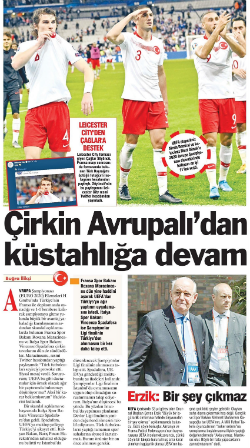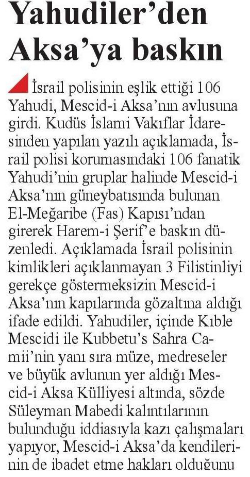Within October 14-20, 2019, three articles that generate hate speech were selected from print media. You can find these articles that contain hate speech against Arabs, Europeans, the British and Jews as well as the analyses written about them below.1
1.
Yurdagül Adun, in her column titled “Turks’ trail with Arabs”, discusses the Arab League’s decision about the Peace Spring Operation. She generates a perception of enmity against Arabs and the British through historical references in the following sentence: “It is said that Arabs attacked the Ottoman Empire in cooperation with the British during WW I and it is completely true. Arabs, which we honored with the description ‘the noble nation’ and protected under all circumstances, stabbed the Ottoman soldiers in the back. As they do with the Kurds today, the British promised the Sharif of Mecca Hussein bin Ali an Arab Kingdom with him as the king, and Hussein attacked the Ottomans with the British. The story ended rather expectedly. When the war came to an end, the British broke their promise.” And, with the title “Turks’ trail with Arabs”, Arabic identity is presented as an enemy. |
2.
The article published in Yeniçağ with the title “Horrible Europeans still being insolent” reports the statements of French and Italian ministers of sports after the Turkey-France game. The newspaper reports these statements by attributing them to all Europeans with insulting words, and thus, reinforces hostile sentiments about Europeans. |
3.
The incident covered by the newspaper Milat with the title “Jews raided Al-Aqsa Mosque” is reported by attributing it to all Jews, reinforcing the perception of enmity against this identity. |
1. Within the scope of the media monitoring work focusing on hate speech, all national newspapers and around 500 local newspapers are monitored based on pre-determined keywords (e.g. Traitor, apostate, refugee, Christian, Jewish, separatist, etc.) via the media monitoring center. While the main focus has been hate speech on the basis of national, ethnic and religious identities; sexist and homophobic discourses are also examined as part of the monitoring work.

